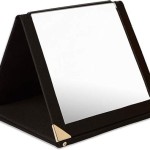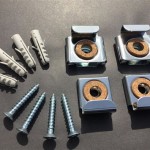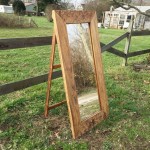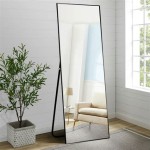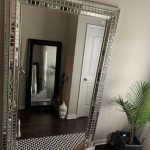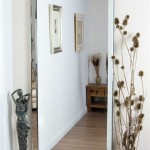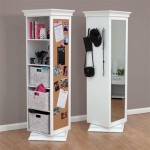Do You Need Blind Spot Mirrors?
Blind spot mirrors, small auxiliary mirrors typically affixed to the side view mirrors of a vehicle, claim to enhance driver visibility and reduce accidents. Their purported benefits raise the question: are these add-ons a necessary safety feature, or simply an aftermarket accessory?
Understanding the nature of blind spots is crucial to answering this question. Blind spots are areas around a vehicle that a driver cannot directly observe from the driver's seat, even with the use of properly adjusted mirrors. These areas are created by the vehicle's pillars, headrests, and the limitations of the driver's peripheral vision. The size and location of blind spots vary depending on the vehicle's design.
Traditional side view mirrors are designed to provide a wide view of the lanes adjacent to the vehicle. However, they inherently leave gaps in visibility, specifically in the areas slightly behind and to the side of the car. These gaps are the blind spots, and they present a potential hazard, especially during lane changes and merges.
Blind spot mirrors aim to eliminate these gaps by providing an additional, angled reflection of the adjacent lanes. These small mirrors, often convex, offer a wider field of view than the main side view mirror, theoretically allowing the driver to see vehicles occupying their blind spots without needing to turn their head.
The effectiveness of blind spot mirrors is a subject of ongoing debate. Proponents argue that they offer a cost-effective solution to enhance driver awareness and reduce the risk of blind spot-related accidents. They highlight the simplicity of installation and the relatively low cost of these mirrors as significant advantages.
However, critics point to several potential drawbacks. Some argue that blind spot mirrors can create a distorted perception of distance and speed, potentially leading to misjudgments during lane changes. The added visual information can also be distracting for some drivers, particularly those unaccustomed to their use.
Furthermore, the small size of blind spot mirrors can limit their effectiveness in certain situations, such as when the adjacent vehicle is significantly larger or smaller than the driver's vehicle. The position and adjustment of the blind spot mirror are also critical; improper placement can further restrict the driver's overall field of view.
Modern vehicles are increasingly equipped with advanced driver-assistance systems (ADAS) designed to mitigate the risks associated with blind spots. These systems typically employ sensors and cameras to detect vehicles in the blind spot and alert the driver through visual or auditory warnings. Some systems even intervene actively, applying brakes or steering corrections to prevent collisions.
The presence of these advanced systems raises further questions regarding the necessity of blind spot mirrors. If a vehicle is already equipped with blind spot monitoring or other similar technologies, the additional benefit of aftermarket blind spot mirrors may be marginal. In fact, the combined use of these systems and blind spot mirrors could potentially lead to information overload and driver confusion.
Properly adjusted side view mirrors remain a fundamental aspect of safe driving. Many drivers inadvertently position their side mirrors to show the side of their own car, effectively increasing the size of the blind spot. Correct adjustment eliminates this overlap and maximizes the view of adjacent lanes, significantly reducing the blind spot area.
Learning and practicing the "head check" maneuver is also essential for safe lane changes. This involves briefly turning one's head to directly observe the blind spot area before initiating a lane change. This simple action can confirm the absence of any vehicles that might not be visible in the mirrors, even with the use of blind spot mirrors or electronic systems.
Ultimately, the decision of whether or not to use blind spot mirrors is a personal one. Drivers should carefully consider the advantages and disadvantages, their individual driving habits, and the specific features of their vehicle. If choosing to use blind spot mirrors, proper installation and adjustment are crucial for maximizing their effectiveness and minimizing potential distractions.
Regularly reviewing and practicing safe driving techniques, including proper mirror adjustment and the head check maneuver, remains the most effective strategy for mitigating the risks associated with blind spots and ensuring safe navigation on the road.

Blind Spot Mirrors Are They Worth It Mytar
What Are The Benefits Of Blind Spot Mirrors Car Part

How To Use Blind Spot Mirrors Yourmechanic Advice

Why Are Blind Spot Mirrors Essential For Your Car

Blind Spot Mirrors Are They Worth It Mytar
Are Blind Spot Mirrors Worth It Quora

12 Best Blind Spot Mirrors For Your Car 2024 And Side View

Why Aftermarket Blind Spot Mirrors For Your Car Are Actually Unsafe Drivespark

The Importance Of Blind Spot Mirrors Enhancing Safety And Visibility Driver Training Ltd

How To Remove Blind Spot Mirrors In The Garage With Carparts Com

